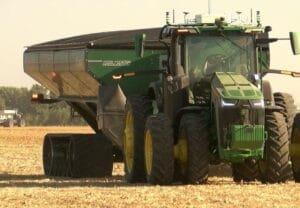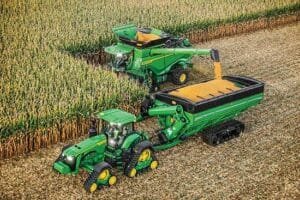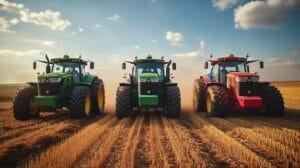The Australian farm tractor market continues to evolve amid changing agricultural demands, technological advancements, and economic factors. As a critical component of the country’s agricultural sector, farm tractors represent a significant investment for farmers and play a vital role in maintaining Australia’s position as a major agricultural producer. This thorough analysis examines the market dynamics, growth projections, and key trends expected to shape the Australian farm tractor industry from 2024 to 2030, considering factors such as precision farming adoption, environmental regulations, and shifting consumer preferences in the agricultural machinery sector. The agricultural machinery sector in Australia is experiencing significant growth, with farm tractors playing a pivotal role in shaping the industry’s future. Current market valuations indicate a robust compound annual growth rate (CAGR) of 4.8% expected through 2030, driven by technological advancements and increasing mechanization of farming practices.
Key manufacturers are focusing on introducing smart tractors equipped with precision farming capabilities, automated steering systems, and IoT integration. These innovations are especially appealing to large-scale agricultural operations in regions like Western Australia and New South Wales, where operational efficiency is paramount.
Market dynamics reveal a strong preference for medium-power tractors (60-130 HP), accounting for approximately 45% of total sales. This segment’s dominance is attributed to their versatility across various farming applications and optimal fuel efficiency. Small-power tractors (below 60 HP) maintain steady demand among hobby farmers and smaller operations, while high-power tractors (above 130 HP) are gaining traction in broadacre farming.
Supply chain disruptions and semiconductor shortages have influenced pricing strategies, with average tractor prices increasing by 15-20% since 2022. However, government initiatives supporting agricultural mechanization and sustainable farming practices have helped offset these costs through various subsidy schemes and tax incentives.Regional analysis shows Queensland and Victoria leading in tractor adoption rates, primarily due to their diverse agricultural activities and favorable farming conditions. The emergence of precision agriculture technologies has particularly influenced purchasing patterns in these regions, with farmers increasingly investing in tractors equipped with variable rate request capabilities and yield monitoring systems.
Environmental considerations are reshaping the market landscape, with a notable shift towards fuel-efficient and low-emission tractors.Electric and hybrid models are gaining attention, though infrastructure limitations currently restrict their widespread adoption in remote farming areas.Rental and leasing services are experiencing ample growth, offering adaptability to farmers dealing with seasonal demands and capital constraints. This trend is expected to continue, potentially reaching 25% of the market share by 2028.
After-sales service and parts availability remain crucial factors influencing brand preference, with established manufacturers maintaining extensive dealer networks across rural Australia. Local assembly and manufacturing facilities are also expanding, reducing dependency on imports and improving spare parts availability.
Competition among major players continues to intensify, with product differentiation and value-added services becoming key differentiators. Market forecasts suggest a potential market value of AUD 2.8 billion by 2030, with sustained growth in precision farming technologies and autonomous capabilities driving investment in research and growth.
Labor shortages in agricultural regions are accelerating the adoption of automated tractor solutions, particularly in grain-growing regions where operational efficiency is critical during peak seasons.










